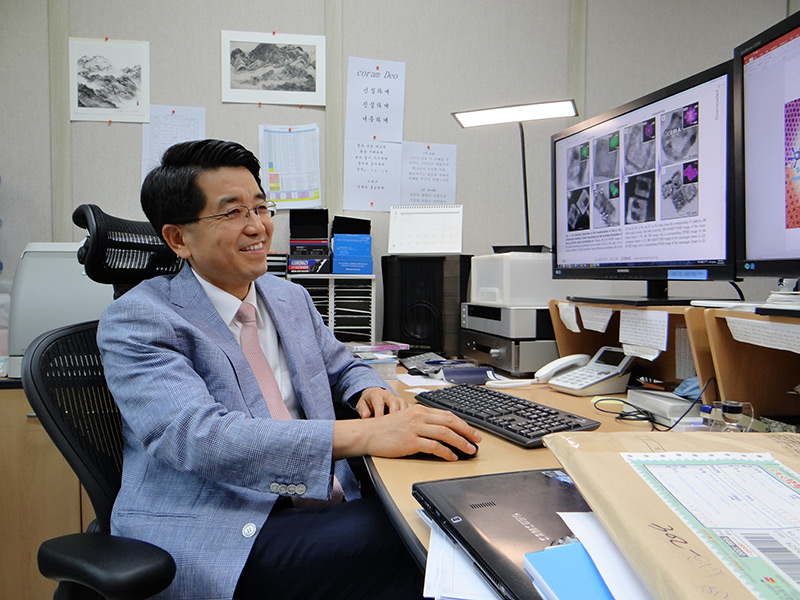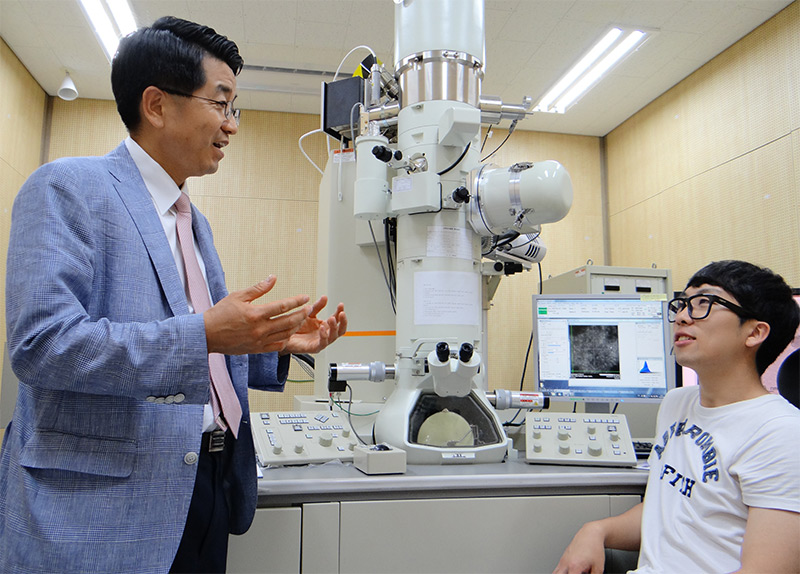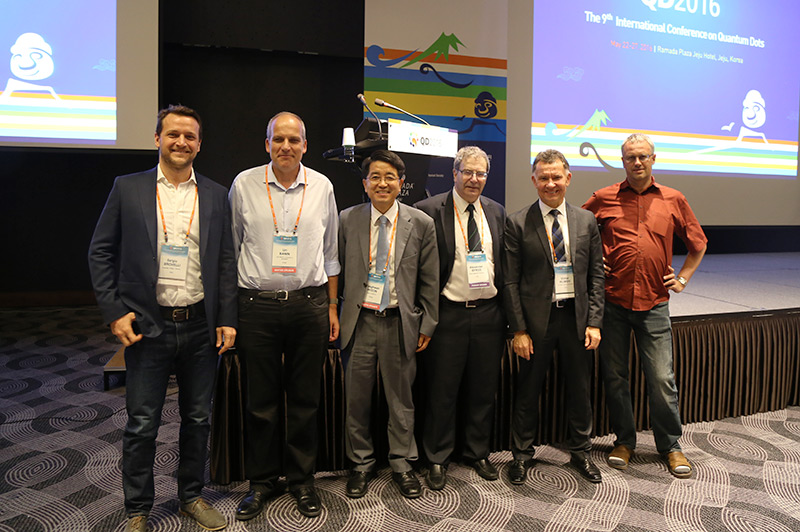주메뉴
- About IBS 연구원소개
-
Research Centers
연구단소개
- Research Outcomes
- Mathematics
- Physics
- Center for Theoretical Physics of the Universe(Particle Theory and Cosmology Group)
- Center for Theoretical Physics of the Universe(Cosmology, Gravity and Astroparticle Physics Group)
- Center for Exotic Nuclear Studies
- Center for Artificial Low Dimensional Electronic Systems
- Center for Underground Physics
- Center for Axion and Precision Physics Research
- Center for Theoretical Physics of Complex Systems
- Center for Quantum Nanoscience
- Center for Van der Waals Quantum Solids
- Chemistry
- Life Sciences
- Earth Science
- Interdisciplinary
- Institutes
- Korea Virus Research Institute
- News Center 뉴스 센터
- Career 인재초빙
- Living in Korea IBS School-UST
- IBS School 윤리경영


주메뉴
- About IBS
-
Research Centers
- Research Outcomes
- Mathematics
- Physics
- Center for Theoretical Physics of the Universe(Particle Theory and Cosmology Group)
- Center for Theoretical Physics of the Universe(Cosmology, Gravity and Astroparticle Physics Group)
- Center for Exotic Nuclear Studies
- Center for Artificial Low Dimensional Electronic Systems
- Center for Underground Physics
- Center for Axion and Precision Physics Research
- Center for Theoretical Physics of Complex Systems
- Center for Quantum Nanoscience
- Center for Van der Waals Quantum Solids
- Chemistry
- Life Sciences
- Earth Science
- Interdisciplinary
- Institutes
- Korea Virus Research Institute
- News Center
- Career
- Living in Korea
- IBS School
News Center
| Title | A Master of Nanoscience Moves Closer to the Top | ||||
|---|---|---|---|---|---|
| Name | Department of Communications | Registration Date | 2016-06-23 | Hits | 3332 |
| att. |
 thumb.jpg
thumb.jpg
|
||||
A Master of Nanoscience Moves Closer to the Top- HYEON Taeghwan, Director of the IBS Center for Nanoparticle Research - Interview PreviewQ: Your academic career did not begin in nanoscience. A: I received my Ph.D. at the University of Illinois at Urbana-Champaign and my dissertation topic was sonochemistry. More specifically, it was about the synthesis of powder using ultrasound. It was materials chemistry but definitely not nanoscience. When I returned to Korea in 1997, I wanted to try something new and nanoscience was gaining momentum at that time. In US, the National Nanotechnology Initiative (NNI) started to support nanoscience projects on a national scale. The Act on the Promotion of Nanotechnology was established in Korea to promote funding research projects in nanoscience. Q: You have been named as one of the world's top 100 chemists of the decade. A: In 2011, the International Year of Chemistry, UNESCO and the International Union of Pure and Applied Chemistry (IUPAC) selected the top 100 chemists of the decade (2000-2010). I ranked 37th in chemistry and 19th in materials science. Q: Please introduce the IBS Center for Nanoparticle Research. A: As the name suggests, we synthesize nanoparticles and assemble them to produce nanomaterials. We also study the properties of these particles and materials and investigate their applications in energy, medicine and catalysis.
"It is a tremendous honor to win a prestigious international award. This award seems to be recognition of my work over the past 18 years." Relentlessly attempting new ways"I think it is like Columbus' Egg. Once you get it, it is easy as pie." "It is the result of our relentless attempts to try new ways rather than to take existing ones," Hyeon explained. He always cares about trying new things. When he participates in tenure reviews for Massachusetts Institute for Technology (MIT) and other major universities, the important criterion he applies to the reviews is "has this candidate ever struggled to become prominent in new fields?" Hyeon's achievements in nanoscience and technology are divided into two major periods. From 1998 to 2005, he focused on synthesizing nanoparticles. After the JACS paper in 2001 regarding how to synthesize size-tuned, uniform nanoparticles, he began searching for ways to gear the original technology toward practical applications. His research on the large-scale production of uniform nanoparticles was published in Nature Materials in 2004 and the following success in adjusting the size of these particles on one-nanometer scale in Angewandte Chemie in 2005.
From 2005, Hyeon has been working on assembling nanoparticles to produce various nanomaterials for medical applications. He developed new contrast agents for MRI using metal oxide nanoparticles and published the results in Angewandte Chemie in 2007, the Proceedings of the National Academy of Sciences (PNAS) in 2010 and JACS in 2011. He went further to explore the applications of nanomaterials for disease treatment as well as diagnosis. He developed multifunctional nanoparticles which can be used for MRI and fluorescence imaging at the same time and for targeted drug delivery to tumors. He published about 20 related papers in journals such as JACS (2006), Angewandte Chemie (2008) and Nature Materials (2008). The impact of his research is huge in the field of nanoscience. The citation counts of his total publications are 34,000 and still counting. It is notable that at least 32,000 out of those counts are related to the research he conducted in Korea. Earlier this year, Thompson Reuters, a major multinational mass media and information firm, ranked him in the world's top 1% of highly cited researchers in their field. Scientists on the Presidential Advisory Council on Science & Technology of Korea named him as a scientist who will lead the nanoscience and technology field for the coming half century. Having his cake and eating it too: Seeking basic and applied research simultaneouslyHyeon has been leading an IBS center dedicated to nanoparticle research since 2012. Being a Professor in Engineering with degrees in Chemistry, Hyeon believes technological breakthroughs come from solid basic research. Therefore, his center conducts pure basic research and simultaneously investigates topics aiming at practical applications, which may be an "unorthodox approach" for an IBS center: It studies basic principles behind the formation of nanoparticles and conducts applied research about materials for batteries, fuel cells and stretchable electronic devices.
Hyeon's IBS center consists of three major groups. The group led by Hyeon is designing and synthesizing nanoparticles and deepening understanding of the synthesis processes. The group led by Group Leader SUNG Yung-Eun, Professor at the School of Chemical and Biological Engineering of Seoul National University (SNU), is using nanoparticles to develop fuel cells, catalysts and batteries while researching electrochemical devices and solar cells. Research Fellows KIM Dae-Hyeong and CHOI Seung-Hong, Professor at the School of Chemical and Biological Engineering of SNU and Professor at the Department of Radiology of SNU respectively, are working together to build stretchable electronic devices for medical applications. The collaboration mechanism connecting these groups is Hyeon's group synthesizing nanoparticles, Kim developing stretchable electronic devices with these particles and Choi conducting animal tests to see if these devices actually work. "Our extensive collaborations are possible thanks to the generous support from IBS" said Director Hyeon. "I believe in the power of close collaboration, rather than solo work, for bigger impacts." The synergistic effects through collaborations within IBS have become prominent since 2014, especially in medicine. The center developed wearable devices for real-time monitoring and drug administering for movement disorders such as Parkinson's disease (Nature Nanotechnology, 2014); a multi-functional endoscope based on graphene and nanoparticles for the treatment and diagnosis of colon cancer (Nature Communications, 2015); a graphene-based electrochemical patch for diabetes monitoring through sweat and drug administering through the skin (Nature Nanotechnology, 2016). This series of achievements has brought considerable world-wide attention to the center.
As a leading scientist, Hyeon wears many hats. From 2010, he introduces himself to foreign researchers as an Associate Editor of JACS, who is responsible for reviewing papers in nanoscience and materials chemistry. He was the chair of the 9th International Conference on Quantum Dots recently held in Jeju and invited world-renowned speakers, which made the conference a great success. "Korea is one of the top three countries in terms of the overall capacity of nanoscience. Our center may rank at least fifth in the world in nanoparticle research area but we will keep pushing ourselves to become the world's top." |
|||||
| Next | |
|---|---|
| before |
- Content Manager
- Public Relations Team : Suh, William Insang 042-878-8137
- Last Update 2023-11-28 14:20















